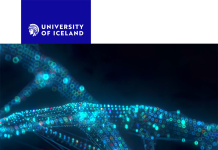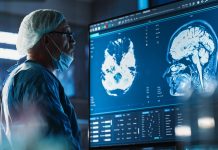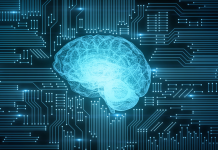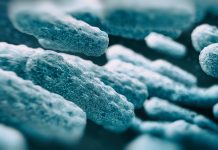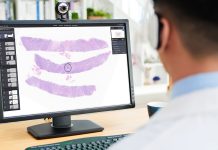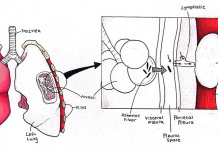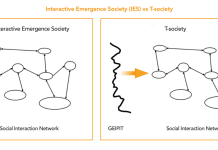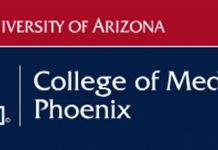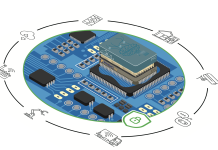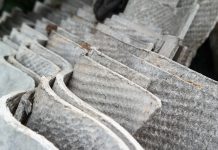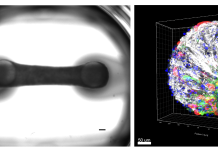Open Access Government produces compelling and informative news, publications, eBooks, and academic research articles for the public and private sector looking at health, diseases & conditions, workplace, research & innovation, digital transformation, government policy, environment, agriculture, energy, transport and more.
Home Search
node - search results
If you're not happy with the results, please do another search
Are we self-organized?
T-patterns, T-societies, and unique social self-similarity from humans to proteins.
EOSC takes steps towards establishing a federation for sharing research data and digital resources
On March 25, 2025, the European Open Science Cloud (EOSC) Tripartite Governance joined in Krakow to define key developments for advancing research data and digital resource sharing across Europe.
Ultrasound neuromodulation for treatment-resistant depression: A case for deep brain stimulation
Tiago Costa from Delft University of Technology discusses why ultrasound neuromodulation has significant potential to transform the treatment of depression.
New quantum operating system sets the way for practical quantum networks
Researchers from the Quantum Internet Alliance (QIA), including teams from TU Delft, QuTech, the University of Innsbruck, INRIA, and CNRS, have developed the first-ever...
Programmable iontronic neural networks
Guo-Xing Miao, Professor at the University of Waterloo, guides us through programmable iontronic neural networks.
Ports in the EU for regional competitiveness and sustainability
Robert Ackrill and Piers Thompson from Nottingham Business School, explore the role and future of ports in the European Union concerning regional competitiveness and sustainability.
Bioinformatics into TB surveillance: A new approach to an ancient foe
David Ussery, a Professor in the Department of BioMedical Informatics at UAMS, and his Ph.D. student Brian Delavan discuss bioinformatics into TB surveillance, presenting a new approach to tackling this ancient foe.
Reimagining diagnostics: Why AI is essential for the future of NHS pathology
AI-powered pathology presents the NHS with a unique opportunity to enhance cancer detection. Paige AI explains how its tools can facilitate quicker diagnostics and improve cost efficiency within the UK’s health system.
Asbestos, the pleural cavity, and autoimmune disease
Jean C. Pfau, Ph.D. from the Center for Asbestos-Related Disease and Kinta Serve from Idaho State University, provide their perspective on asbestos, the pleural cavity, and autoimmune disease.
Fixed line, cloud and mobile connectivity to meet any needs
Spitfire Network Services Limited is an award-winning business internet and telecoms services provider with over 30 years’ experience. Sales Director Dominic Norton highlights some of the company’s solutions and services.
Understanding T-societies: How patterns shape our lives
Emeritus Professor Magnus S Magnusson explores the unique sudden bio-mathematical self-similarity between human and protein societies and the human explosion: from T-patterns to T-strings and T-societies.
Vision for the future: College of Medicine – University of Arizona
The College of Medicine-Phoenix is committed to four pillars that empower its mission and vision for the future. We value our past, are proud of our accomplishments to date and believe that collectively, our future is framed by how expansive our vision is and limited only by boundaries we place on these dreams.
AI to create personalised health responses to air pollution
Professor Fan Chung, Professor Christopher Pain and Claire Dilliway from Imperial College London, walk us through the exciting use of artificial intelligence to create personalised health responses to air pollution and invite you to get involved.
A novel route to secure and low-power accelerators for edge computing
Dr. Fabio Pavanello, Researcher at CNRS/CROMA Laboratory, guides us through a novel route to secure and low-power accelerators for edge computing, or in other words, the NEUROPULS approach.
Intra-operative imaging solutions for surgeons
Birgitta Dresp from the Centre National de la Recherche Scientifique (CNRS) discusses the challenges associated with intra-operative imaging technology and the quest for gold standards of surgical skill.
Asbestos disease pathogenesis: The long and short of it
Jean Pfau and Kinta Serve explore a critical and novel hypothesis concerning the size of fibers in asbestos disease pathogenesis.
Enhancing lithium-ion battery performance with Cabot’s conductive additives
Cabot Corporation is a leading global company specializing in chemicals and performance materials. With over 140 years of experience, the company has established itself as a global leader in conductive additives for battery materials. VP of Global Strategy & Marketing, Matt Wood, tells us more.
How and why personalized medicine is transforming healthcare
Personalized medicine is considered a branch of healthcare that co-opts a proactive approach to patient care, wherein the disease is detected early, and the focus on illness is prevention.
Extracellular electron transfer explained
Arpita Bose, PhD from Washington University in St. Louis, guides us through host-associated impacts and biotechnological applications of extracellular electron transfer in electrochemically active bacteria.
The role of stem cell-derived tissues in novel treatments for cardiac ailments
Curbs on animal testing mean human tissues derived from induced pluripotent stem cells offer a promising platform in discovering novel treatments for cardiac ailments.

